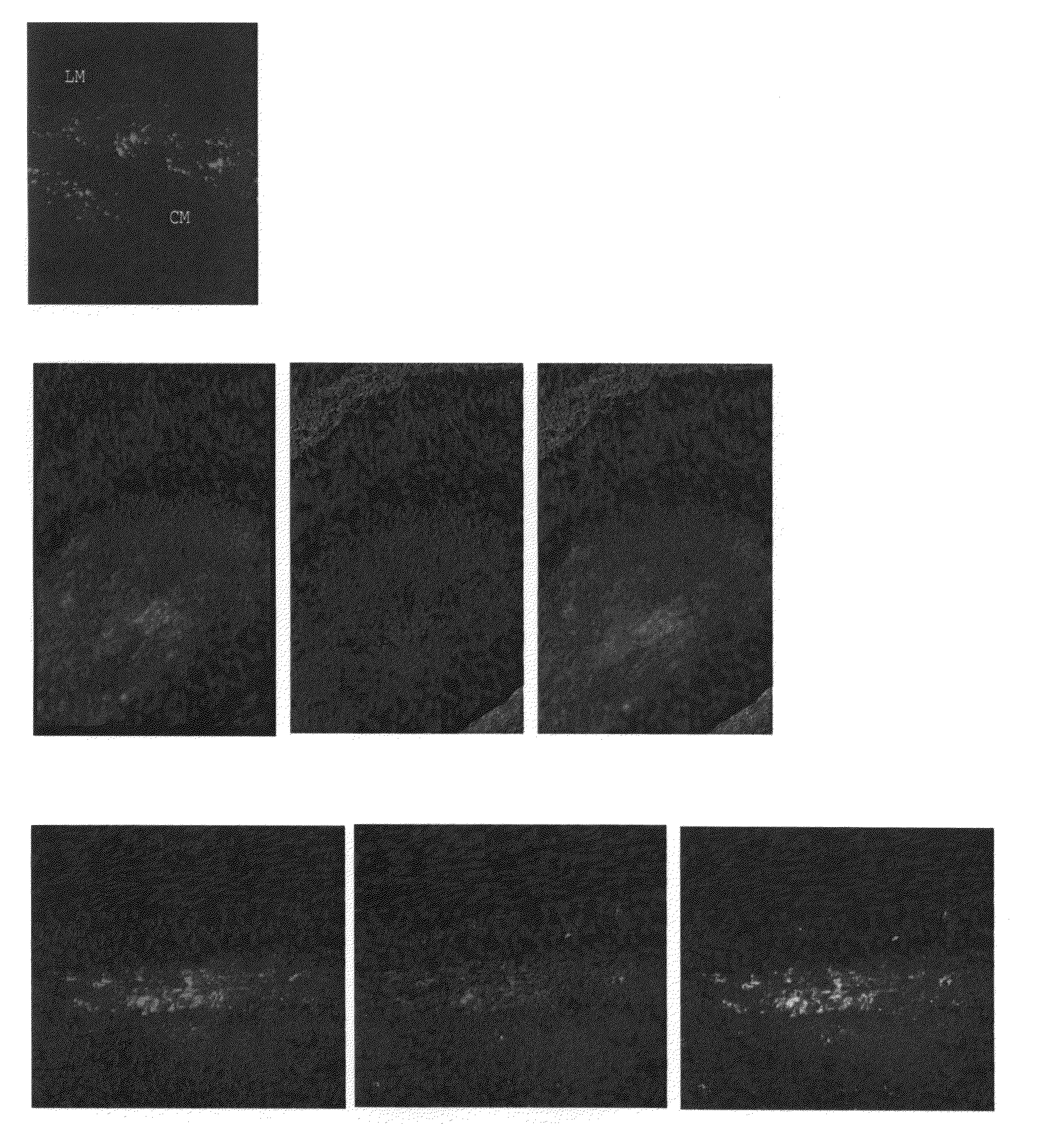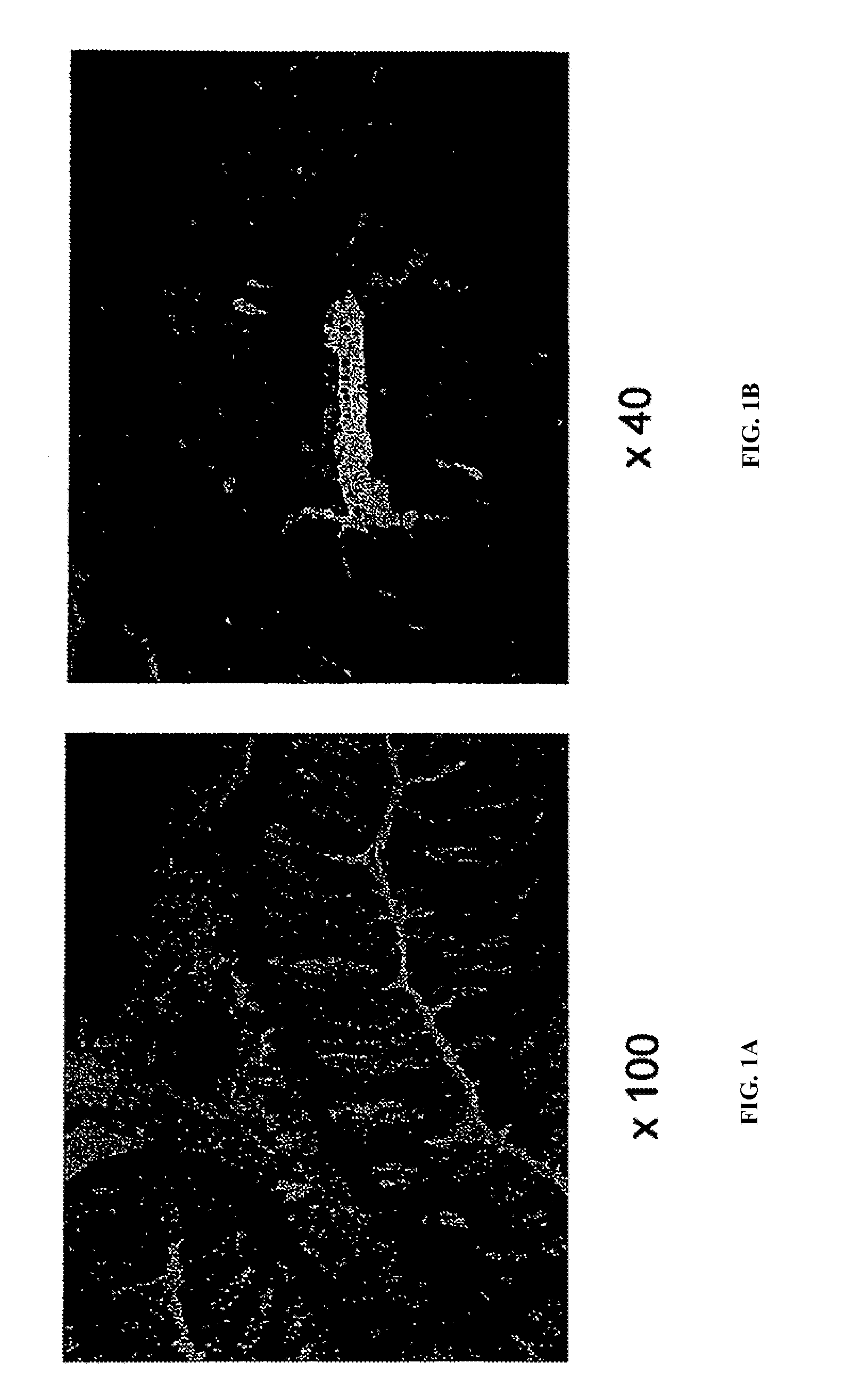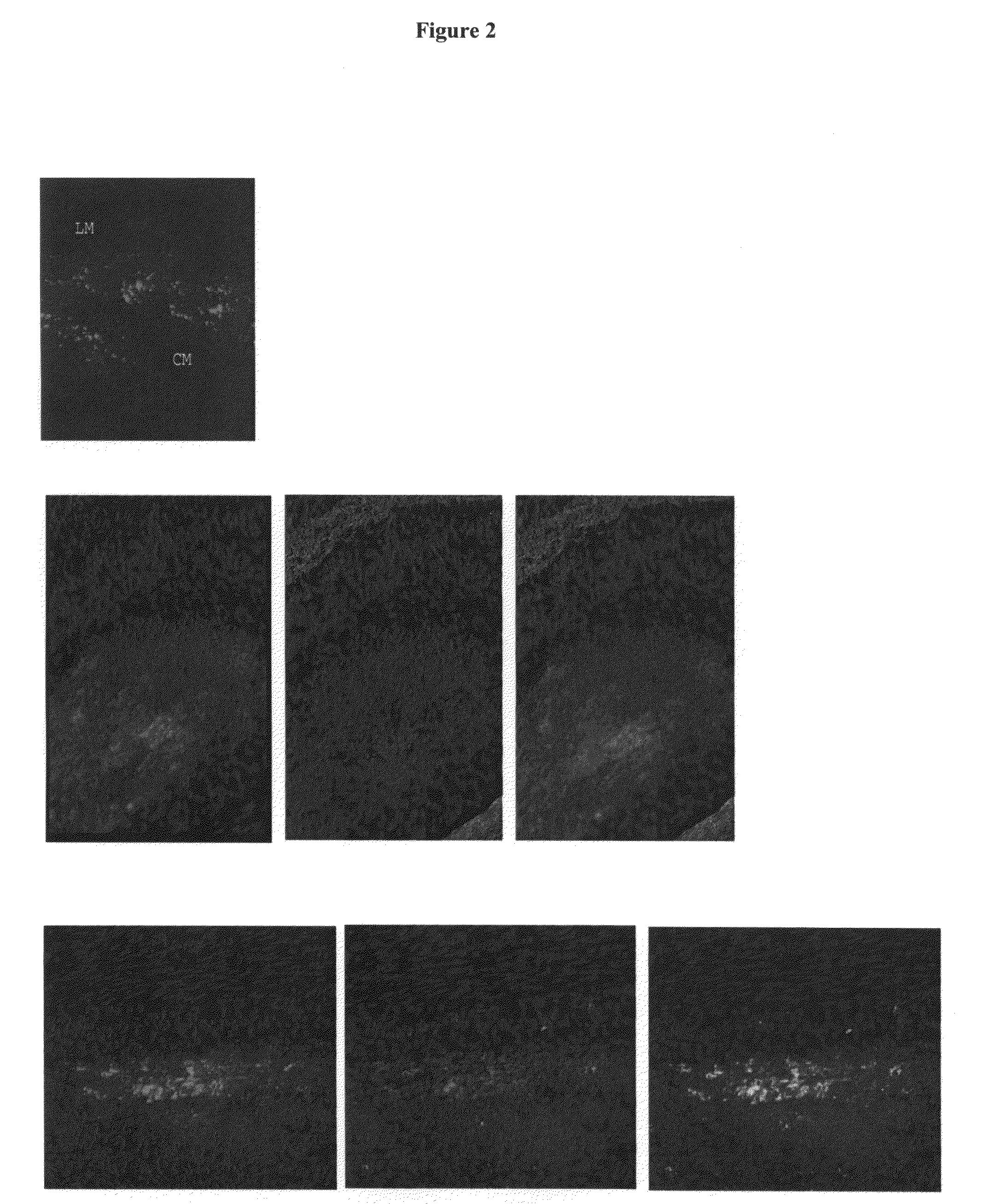Muscle Derived Cells For The Treatment Of Gastro-Esophageal Pathologies And Methods Of Making And Using The Same
a gastro-esophageal and muscle derived technology, applied in the field of muscle derived progenitor cells, to achieve the effect of improving at least one symptom
- Summary
- Abstract
- Description
- Claims
- Application Information
AI Technical Summary
Benefits of technology
Problems solved by technology
Method used
Image
Examples
example 1
MDC Enrichment, Isolation and Analysis According to the Pre-Plating Method
[0053]Enrichment and isolation of MDCs: MDCs were prepared as described (U.S. Pat. No. 6,866,842 of Chancellor et al.). Muscle explants were obtained from the hind limbs of a number of sources, namely from 3-week-old mdx (dystrophic) mice (C57BL / 10ScSn mdx / mdx, Jackson Laboratories), 4 6 week-old normal female SD (Sprague Dawley) rats, or SCID (severe combined immunodeficiency) mice. The muscle tissue from each of the animal sources was dissected to remove any bones and minced into a slurry. The slurry was then digested by 1 hour serial incubations with 0.2% type XI collagenase, dispase (grade II, 240 unit), and 0.1% trypsin at 37° C. The resulting cell suspension was passed through 18, 20, and 22 gauge needles and centrifuged at 3000 rpm for 5 minutes. Subsequently, cells were suspended in growth medium (DMEM supplemented with 10% fetal bovine serum, 10% horse serum, 0.5% chick embryo extract, and 2% penicill...
example 2
MDC Enrichment, Isolation and Analysis According to the Single Plate Method
[0058]Populations of rapidly- and slowly-adhering MDCs were isolated from skeletal muscle of a mammalian subject. The subject may be a human, rat, dog or other mammal. Biopsy size ranged from 42 to 247 mg.
[0059]Skeletal muscle biopsy tissue is immediately placed in cold hypothermic medium (HypoThermosol (BioLife) supplemented with gentamicin sulfate (100 ng / ml, Roche)) and stored at 4° C. After 3 to 7 days, biopsy tissue is removed from storage and production is initiated. Any connective or non-muscle tissue is dissected from the biopsy sample. The remaining muscle tissue that is used for isolation is weighed. The tissue is minced in Hank's Balanced Salt Solution (HBSS), transferred to a conical tube, and centrifuged (2,500×g, 5 minutes). The pellet is then resuspended in a Digestion Enzyme solution (Liberase Blendzyme 4 (0.4-1.0 U / mL, Roche)). 2 mL of Digestion Enzyme solution is used per 100 mg of biopsy ti...
example 3
Soft Tissue Augmentation of the Gastro-esophageal Junction and Anal Sphincter
[0064]Sprague-Dawley (SD) rats were prepared for surgery by anesthetizing with halothane using standard methods, and washing the surgical site with Betadine® solution. A midline abdomen incision was made to expose the gastroesophageal junction and anal sphincter. The soft tissue was injected with 10 μl of a suspension of muscle-derived progenitor cells, prepared pursuant to the methods of Example 1, in HBSS (1-1.5×106 cells) using a Hamilton microsyringe. At day 3 post-injection, the area surrounding each injection site was excised, prepared for histochemical analysis, stained for β-galactosidase to determine the location and viability of the cells carrying the LacZ marker, examined microscopically, and photographed. Results of these experiments demonstrate that MDC compositions can be used as esophageal and anal sphincter bulking materials (FIGS. 1A and 1B) for the treatment of gastroesophageal reflux or f...
PUM
 Login to View More
Login to View More Abstract
Description
Claims
Application Information
 Login to View More
Login to View More - R&D
- Intellectual Property
- Life Sciences
- Materials
- Tech Scout
- Unparalleled Data Quality
- Higher Quality Content
- 60% Fewer Hallucinations
Browse by: Latest US Patents, China's latest patents, Technical Efficacy Thesaurus, Application Domain, Technology Topic, Popular Technical Reports.
© 2025 PatSnap. All rights reserved.Legal|Privacy policy|Modern Slavery Act Transparency Statement|Sitemap|About US| Contact US: help@patsnap.com



